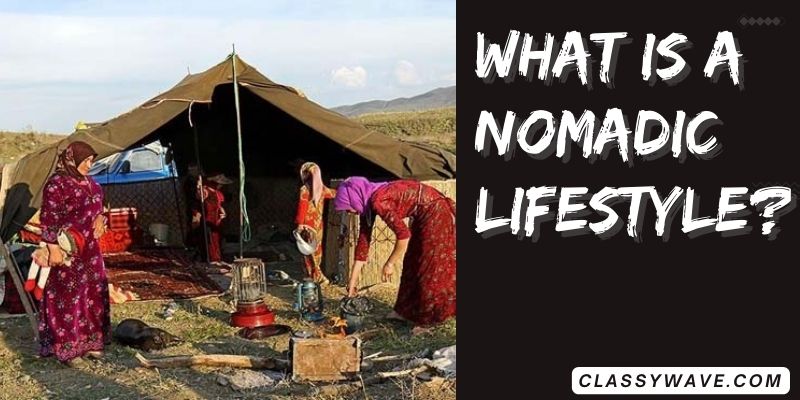what is a nomadic lifestyle? Embracing Freedom
Embarking on a nomadic lifestyle involves a profound shift, embracing constant movement and cultural diversity. Understanding its key characteristics, benefits, and challenges is crucial. From initiating this lifestyle to balancing work and travel, this comprehensive guide explores essential gear, financial considerations, and the unique perspectives of nomadic families.
Understanding the Nomadic Lifestyle
Embracing constant mobility, the nomadic lifestyle involves individuals or groups moving from place to place. Rooted in diverse cultural histories, it signifies a departure from a sedentary existence. The nomadic lifestyle can be driven by various factors, including a pursuit of adventure, cultural traditions, or economic necessity. This way of life challenges conventional norms, emphasizing adaptability and a unique connection to different environments.
Key Characteristics of a Nomadic Lifestyle
The nomadic lifestyle is characterized by its fluidity, with individuals or communities frequently changing locations. Adaptability, resourcefulness, and a minimalistic approach are key traits. Nomads often rely on portable shelters, sustainable practices, and a strong sense of community. This lifestyle prioritizes experiences over possessions, fostering a deep connection to diverse cultures and environments. Flexibility and an open-minded attitude are essential as nomads navigate the challenges and rewards of a constantly changing existence.
Benefits of Embracing a Nomadic Lifestyle
Choosing a nomadic lifestyle offers a range of benefits. It allows for a dynamic exploration of diverse cultures, fostering personal growth and broadening perspectives. The freedom to continually explore new landscapes promotes adaptability and resilience. Nomads often experience a deeper connection to nature, reduced materialism, and increased mindfulness. Additionally, the nomadic lifestyle provides opportunities for unique work experiences and the development of a global network, offering a rich and fulfilling life outside the constraints of a fixed location.
Challenges Faced in a Nomadic Lifestyle
While the nomadic lifestyle presents numerous rewards, it also comes with its share of challenges. Constantly adapting to new environments can be physically and emotionally demanding. Issues such as access to essential services, healthcare, and maintaining consistent income can pose hurdles. Building and sustaining relationships, especially for families, require extra effort. Nomads often grapple with feelings of isolation and the need for a stable support system. Successfully navigating these challenges demands resilience, flexibility, and strategic planning.
How to Start Living a Nomadic Lifestyle
Initiating a nomadic lifestyle involves careful planning and a deliberate shift in mindset. Begin by evaluating personal motivations, whether they be rooted in wanderlust, career flexibility, or cultural exploration. Financial considerations, such as remote work options or a savings plan, play a crucial role. Choosing appropriate gear, researching destinations, and developing a network of fellow nomads contribute to a successful transition. Embracing minimalism and honing skills for remote work or freelancing are essential steps toward realizing the dream of a nomadic lifestyle.
Nomadic Living
The nomadic lifestyle has deep cultural roots in various societies worldwide. Nomadic communities often have unique traditions, languages, and social structures that have evolved over generations. Understanding these cultural perspectives is crucial for appreciating the diversity within nomadic lifestyles. From the Mongolian herders of Central Asia to the Tuareg people in the Sahara, each nomadic culture reflects a harmonious relationship with the environment, a strong sense of community, and a distinct way of life that has endured through centuries.
Balancing Work and Travel in a Nomadic Lifestyle
Achieving a harmonious balance between work commitments and the desire for constant travel is a central challenge for those adopting a nomadic lifestyle. Remote work opportunities, freelancing, and entrepreneurship are common solutions, allowing individuals to sustain their travels financially. Establishing disciplined work routines, effective time management, and reliable internet access are essential. Navigating different time zones and creating a conducive work environment on the road require adaptability. Successfully integrating work and travel enhances the sustainability of a nomadic lifestyle.
Essential Gear for a Nomadic Lifestyle
Living a nomadic lifestyle necessitates careful consideration of essential gear for comfort, safety, and functionality. Lightweight, durable travel gear, including a quality backpack, versatile clothing, and reliable footwear, is fundamental. Portable shelter options, such as tents or camper vans, provide necessary accommodation. Technology, like a reliable laptop and communication devices, is crucial for remote work and staying connected. Additionally, compact cooking equipment, water purification tools, and sustainable energy sources contribute to a self-sufficient and comfortable nomadic experience.
Choosing Destinations for a Nomadic Lifestyle
Nomads carefully select destinations based on a variety of factors, including climate, cost of living, safety, and cultural appeal. Some may prioritize proximity to nature, seeking remote landscapes and outdoor adventures, while others choose vibrant urban environments for cultural immersion. Digital nomads often consider the availability of reliable internet and coworking spaces. The diversity of destinations allows nomads to curate a lifestyle that aligns with their preferences and goals, creating a rich tapestry of experiences.
Financial Considerations for a Nomadic Lifestyle
Successfully sustaining a nomadic lifestyle requires careful financial planning and management. Establishing a budget that accounts for travel expenses, accommodation, food, and emergencies is crucial. Exploring income-generating avenues such as remote work, freelancing, or entrepreneurship ensures financial stability on the road. Building a financial safety net and understanding the tax implications of a nomadic lifestyle are essential components. Developing a frugal mindset and embracing minimalist principles contribute to long-term financial sustainability and the freedom to explore without financial constraints.
Nomadic Families
Families embracing a nomadic lifestyle face unique challenges, including providing education for children and maintaining strong relationships on the move. Homeschooling, online education platforms, and immersive learning experiences become integral to a nomadic family’s life. Building a supportive community, both among fellow nomads and back home, helps address feelings of isolation. Balancing individual pursuits with family priorities requires open communication and adaptability. Nomadic families often discover profound bonding experiences and shared adventures that contribute to a unique family dynamic.
The Environmental Impact of a Nomadic Lifestyle
While the nomadic lifestyle fosters a deep connection to the natural world, it also raises environmental considerations. Nomads must adopt sustainable practices to minimize their ecological footprint. Responsible waste disposal, energy conservation, and respecting local ecosystems are crucial aspects. Sustainable transportation choices, such as electric or fuel-efficient vehicles, align with environmental consciousness. Nomadic communities can actively contribute to conservation efforts, promoting environmental awareness and leaving a positive impact on the landscapes they traverse.
Embracing Minimalism in a Nomadic Lifestyle
Central to the nomadic lifestyle is the philosophy of minimalism, emphasizing the prioritization of experiences over material possessions. Nomads intentionally streamline their belongings, focusing on practical and versatile items. This mindset extends beyond physical possessions to digital clutter and unnecessary commitments. Embracing minimalism allows for greater flexibility, reduced stress, and a heightened appreciation for the essentials. Nomads find liberation in the simplicity of their lifestyles, fostering a deeper connection to their surroundings and a sense of personal fulfillment.
Health and Wellness in a Nomadic Lifestyle
Maintaining physical and mental well-being is paramount for those leading a nomadic lifestyle. Access to healthcare, fitness facilities, and nutritious food can vary in different locations. Nomads prioritize self-care practices, incorporating regular exercise, balanced nutrition, and mindfulness into their routines. Remote work flexibility enables individuals to manage stress and maintain a healthy work-life balance. Cultivating a strong support network, staying connected with loved ones, and embracing a positive mindset contribute to the overall health and wellness of nomadic individuals.
Technological Tools for Nomads: Staying Connected on the Road
Technology plays a crucial role in facilitating the nomadic lifestyle, allowing individuals to stay connected, work remotely, and navigate unfamiliar territories. Reliable communication tools, virtual collaboration platforms, and digital nomad-friendly apps enhance productivity and connectivity. GPS navigation systems, language translation apps, and travel planning tools assist in seamless exploration. Nomads leverage technology to share their experiences through blogs and social media, creating a global community. The integration of cutting-edge tech enables a smooth and connected nomadic experience, breaking down geographical barriers.
Conclusion
In conclusion, the nomadic lifestyle offers a tapestry of experiences, challenging conventional norms and fostering personal growth. As nomads navigate diverse landscapes, the balance between work and travel becomes an art, supported by essential gear and financial savvy. Nomadic living is not only a cultural legacy but a contemporary choice, emphasizing minimalism, environmental consciousness, and the pursuit of holistic well-being. Ultimately, it’s a journey that transcends borders, connecting individuals globally through shared experiences and a unique approach to life.
FAQs
Question: What are the main challenges of a nomadic lifestyle?
Answer: Constant adaptation, access to services, and building stable relationships pose challenges in the nomadic lifestyle.
Question: How can one afford a nomadic lifestyle?
Answer: Remote work, freelancing, and careful budgeting enable financial sustainability for a nomadic lifestyle.
Question: What gear is essential for a nomadic lifestyle?
Answer: Lightweight travel gear, portable shelter, technology for remote work, and sustainable essentials are crucial for nomads.
Question: How do nomadic families handle education for their children?
Answer: Nomadic families utilize homeschooling, online education, and immersive learning experiences to educate their children on the move.
Question: What impact does a nomadic lifestyle have on the environment?
Answer: Nomads practice sustainable habits, emphasizing responsible waste disposal, energy conservation, and eco-friendly transportation to minimize environmental impact.







